In today's digital landscape, hiring a proficient back end developer is key to ensuring your applications run smoothly and efficiently behind the scenes. However, many companies struggle to identify the right fit due to a lack of clarity on the skill sets and qualities needed for this role. A successful back end developer must possess strong problem-solving abilities, knowledge of databases, and expertise in server-side languages like Java, Python, or Node.js.
This article provides a comprehensive guide for hiring managers and recruiters on finding and securing top back end developer talent. We cover everything from crafting a compelling job description, utilizing pre-employment assessments, to selecting the right platforms for sourcing candidates. For more insights, check out our detailed back end developer interview questions.
Table of contents
Back End Developer Hiring Process
The hiring process for a Back End Developer typically takes about 1-2 months. Here's a quick overview of the timeline and steps involved:
- Create and post a detailed Back End Developer job description
- Review resumes (expect initial applications within 3-4 days)
- Conduct skill assessments or coding tests (about 1 week)
- Interview shortlisted candidates
- Make an offer to the best candidate
Each step requires careful consideration to ensure you find the right fit for your team. In the following sections, we'll explore these steps in detail, providing checklists and helpful resources to streamline your hiring process.
Skills and qualifications to look for in a Back End Developer
Creating an ideal candidate profile for a Back End Developer can be tricky. The must-have skills for one company might be just a preference for another. It's important to draw a clear line between required and preferred skills based on your specific tech stack and project needs.
Here are some popular required and preferred skills and qualifications to consider when hiring a Back End Developer:
Required Skills:
- Proficiency in backend programming languages (e.g., Python, Java, Ruby, Node.js)
- Experience with databases (SQL and NoSQL)
- Knowledge of web services and APIs
- Understanding of server-side architecture
- Familiarity with version control systems (e.g., Git)
Preferred Skills:
- Experience with cloud platforms (AWS, Azure, or Google Cloud)
- Knowledge of containerization and orchestration (Docker, Kubernetes)
- Familiarity with CI/CD pipelines
- Understanding of microservices architecture
- Experience with caching mechanisms and message queues
To assess these skills effectively, consider using coding tests that evaluate a candidate's practical abilities in backend development.
| Required skills and qualifications | Preferred skills and qualifications |
|---|---|
| Proficiency in backend programming languages (e.g., Python, Java, Ruby, Node.js) | Experience with cloud platforms (AWS, Azure, or Google Cloud) |
| Experience with databases (SQL and NoSQL) | Knowledge of containerization and orchestration (Docker, Kubernetes) |
| Knowledge of web services and APIs | Familiarity with CI/CD pipelines |
| Understanding of server-side architecture | Understanding of microservices architecture |
| Familiarity with version control systems (e.g., Git) | Experience with caching mechanisms and message queues |
How to Write an Effective Back End Developer Job Description
Once you've identified the ideal candidate profile for your back end developer role, the next step is crafting a compelling job description. A well-written JD attracts top talent and sets clear expectations. Here are some key tips to create an impactful back end developer job description:
- Highlight specific responsibilities and impact: Clearly outline the day-to-day tasks and long-term projects the developer will handle. Emphasize how their work will contribute to the company's goals and products.
- Balance technical requirements with soft skills: List must-have programming languages and frameworks, but also mention desired traits like problem-solving, teamwork, and communication skills.
- Showcase your company culture and benefits: Describe what makes your workplace unique, growth opportunities, and any standout perks to attract candidates who align with your values.
- Keep it concise and skimmable: Use bullet points and short paragraphs to make the job description easy to read and understand quickly.
Top 10 Platforms to Hire Back End Developers
Now that you have a clear job description, it’s time to source candidates effectively by listing your position on relevant job sites. This can significantly widen your reach and attract qualified Back End Developers who fit your criteria. Here are three platforms to consider for your hiring needs.
LinkedIn Jobs
Ideal for posting full-time positions and reaching a large pool of professional Back End Developers. Offers advanced search and filtering options for recruiters.
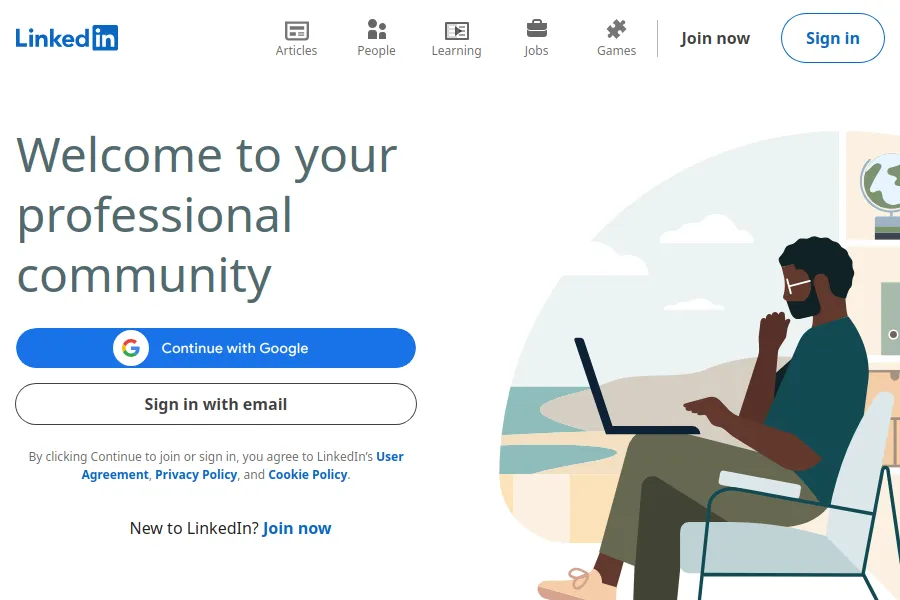
Indeed
Widely used job board suitable for posting various Back End Developer positions. Provides tools for resume search and candidate screening.
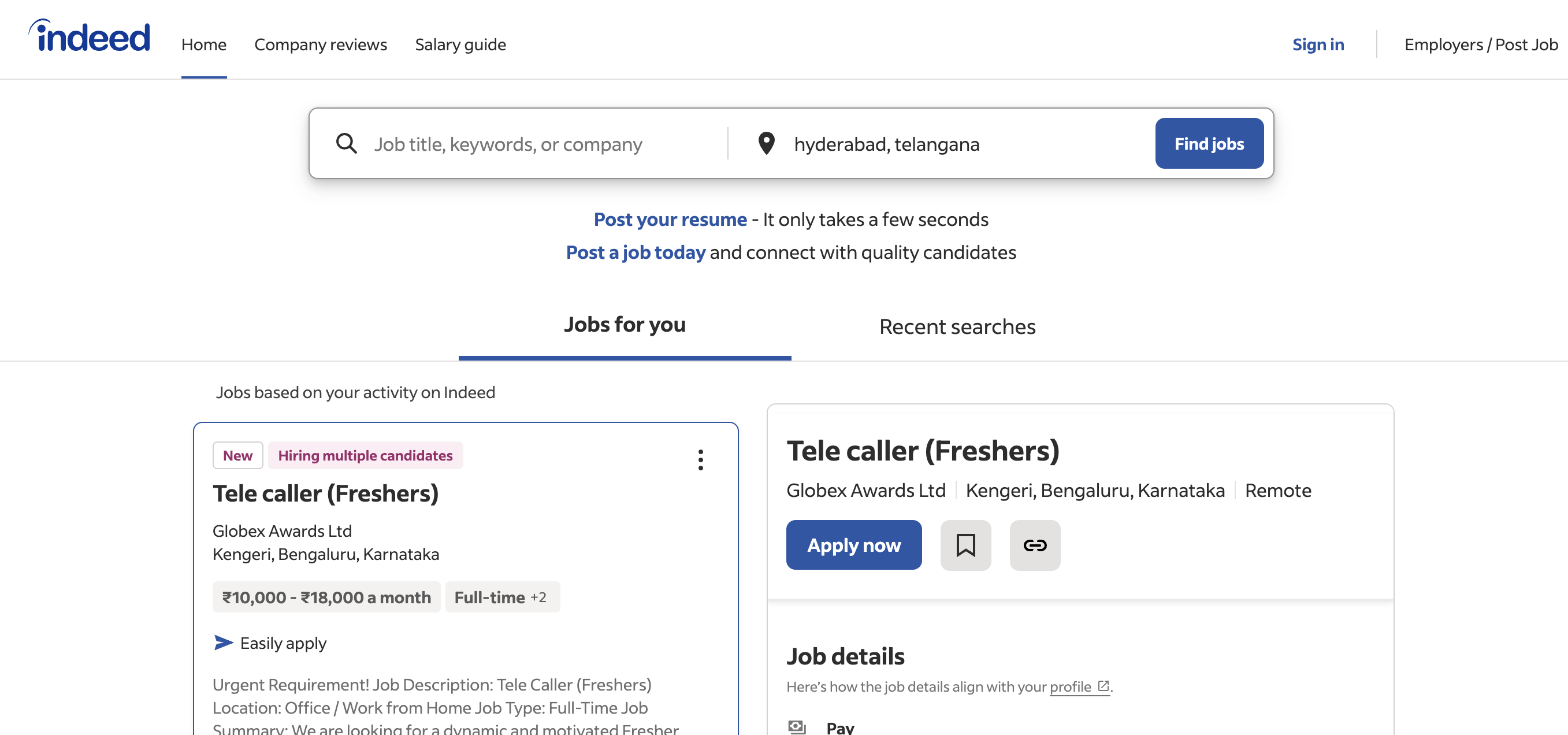
Dice
Specialized in tech jobs, perfect for targeting Back End Developers with specific skills. Offers precision matching and tech-focused candidate pools.
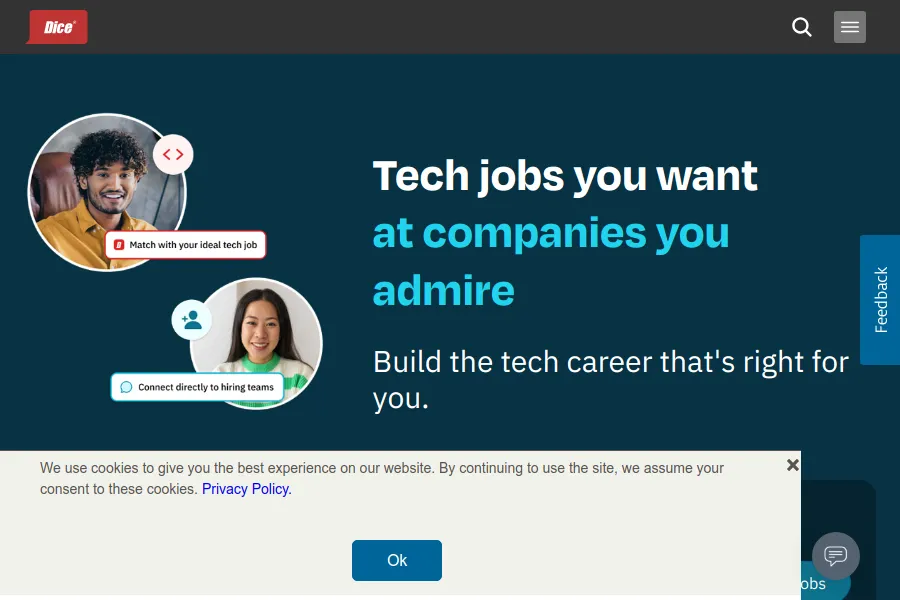
The remaining platforms also offer great opportunities for finding the right talent. Toptal and Upwork cater to freelancers, making them ideal for project-based roles. Stack Overflow Jobs and AngelList Talent target tech-specific and startup environments, respectively, while GitHub Jobs provides access to developers showcasing their skills through open-source contributions. For remote hiring, consider FlexJobs, and Hired focuses on connecting you with pre-screened candidates using AI.
How to Screen Back End Developer Resumes?
When recruiting for a back end developer, resume screening is a key step to narrow down the pool of candidates. With numerous applications coming in, it's not feasible to interview everyone. Effective screening allows you to focus on candidates who are more likely to match the role's requirements, saving you time and boosting the quality of your hires.
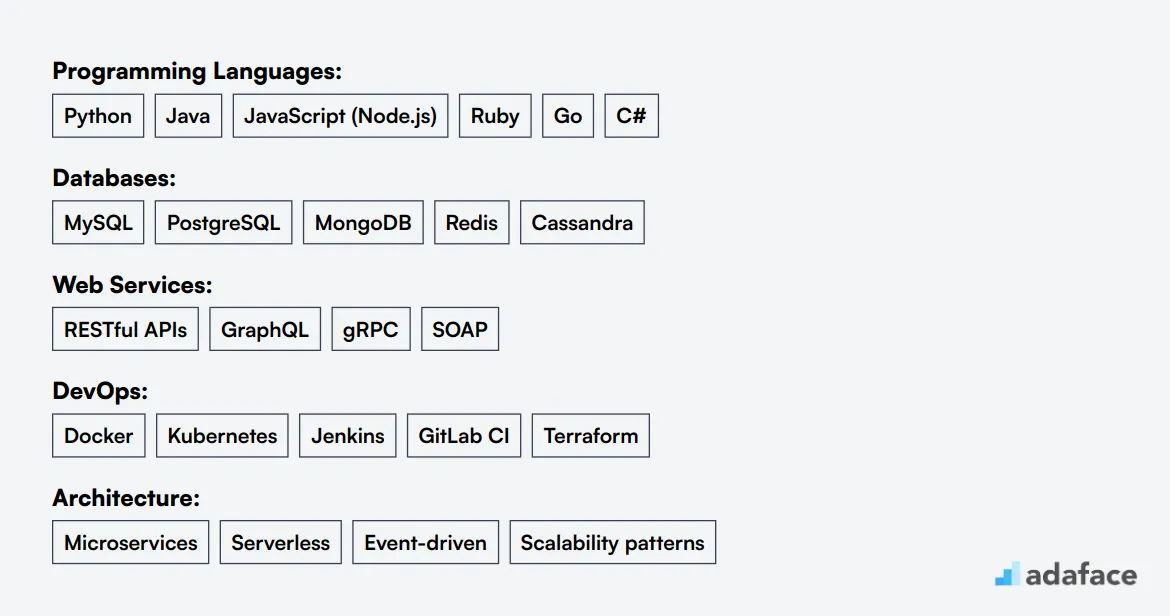
Start by identifying the must-have keywords in the resumes you screen. Look for primary keywords like backend programming languages (e.g., Python, Java, Node.js) and experience with databases (SQL, NoSQL). Secondary keywords could relate to skills like web services, APIs, or server-side architecture. Understanding these keywords can help you quickly determine if a candidate meets the necessary criteria for further consideration.
For a more streamlined process, consider using AI tools to assist in resume screening. Large Language Models like ChatGPT can help you sift through resumes by identifying relevant keywords and matching them against your job description. This method can reduce human error and make the initial screening process faster and more consistent.
Here's a sample prompt you can use with AI tools to screen resumes for a back end developer role:
TASK: Screen resumes to match job description for back end developer role
INPUT: Resumes
OUTPUT: For each resume, provide following information:
- Email id
- Name
- Matching keywords
- Score (out of 10 based on keywords matched)
- Recommendation (detailed recommendation of whether to shortlist this candidate or not)
- Shortlist (Yes, No or Maybe)
RULES:
- If you are unsure about a candidate's fit, put the candidate as Maybe instead of No
- Keep recommendation crisp and to the point.
KEYWORDS DATA:
- Programming Languages (Python, Java, Node.js)
- Databases (SQL, NoSQL)
- Web Services (RESTful APIs, GraphQL)
Recommended skills tests for Back End Developers
Skills tests are an effective way to evaluate Back End Developer candidates beyond their resumes. They provide objective insights into a candidate's technical abilities and problem-solving skills. Here are the top tests we recommend for assessing Back End Developers:
Backend Engineer Test: This comprehensive assessment covers core backend development concepts, including server-side programming, database management, and API design. It helps evaluate a candidate's overall backend engineering skills.
Java Online Test: For roles requiring Java expertise, a Java skills assessment is essential. It measures proficiency in Java syntax, object-oriented programming, and common Java frameworks used in backend development.
Python Online Test: Python is widely used in backend development, especially for web applications. A Python skills test assesses a candidate's ability to write efficient Python code and use relevant libraries for backend tasks.
SQL Online Test: Backend developers often work with databases, making SQL knowledge critical. An SQL skills assessment evaluates a candidate's ability to write complex queries, manage databases, and optimize data retrieval.
REST API Test: APIs are fundamental to modern backend systems. A REST API test assesses a candidate's understanding of API design principles, HTTP methods, and best practices in creating scalable and secure APIs.
Structuring Technical Interviews for Back End Developers
After candidates pass the initial skills tests, it's time for technical interviews to assess their hard skills more deeply. While skills tests are great for initial screening, technical interviews help identify the best candidates for the role. Let's look at some sample interview questions to evaluate back end developers effectively.
Consider asking: 'Explain the differences between SQL and NoSQL databases.' This tests database knowledge. 'How would you optimize a slow-running query?' checks problem-solving skills. 'Describe your experience with version control systems.' assesses collaboration abilities. 'What security measures do you implement in your back end code?' evaluates security awareness. 'How do you handle API rate limiting?' tests system design understanding. These questions help gauge a candidate's technical depth and practical experience.
How much does it cost to hire a Back End Developer?
The cost to hire a Back End Developer varies greatly depending on location and experience. In the United States, salaries range from $106,073 to $224,438 annually, with Seattle offering the highest median at $174,051. In Australia, salaries range from AUD 79,774 to AUD 168,148, with Sydney generally paying more. Meanwhile, in Canada, the range is CAD 62,000 to CAD 169,000, with Victoria, BC at the high end and Markham, ON at the low end.
Back End Developer Salary in the United States
Back End Developers in the United States earn competitive salaries. The average annual salary ranges from $106,073 to $224,438, with a median of $154,295.
Location plays a big role in salary variations. For example, Seattle offers the highest median salary at $174,051, while San Francisco and Los Angeles follow closely behind.
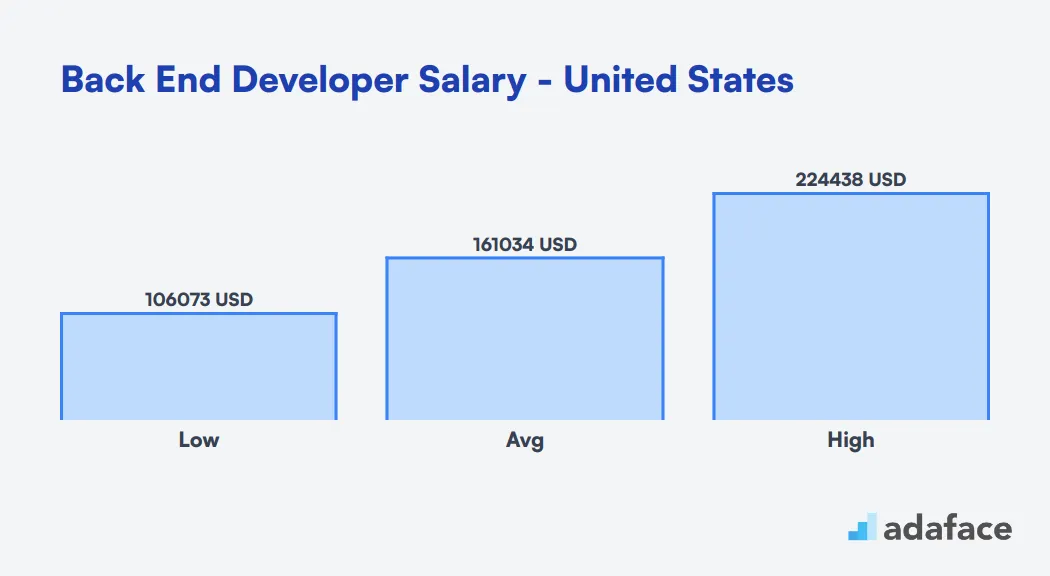
Back End Developer Salary in Australia
In Australia, the salary for a Back End Developer varies significantly based on location and experience. On average, a Back End Developer earns around AUD 120,824 per year, with salaries ranging from approximately AUD 79,774 to AUD 168,148. Major cities like Sydney and Melbourne typically offer higher salaries, with figures averaging AUD 126,831 and AUD 123,793, respectively.
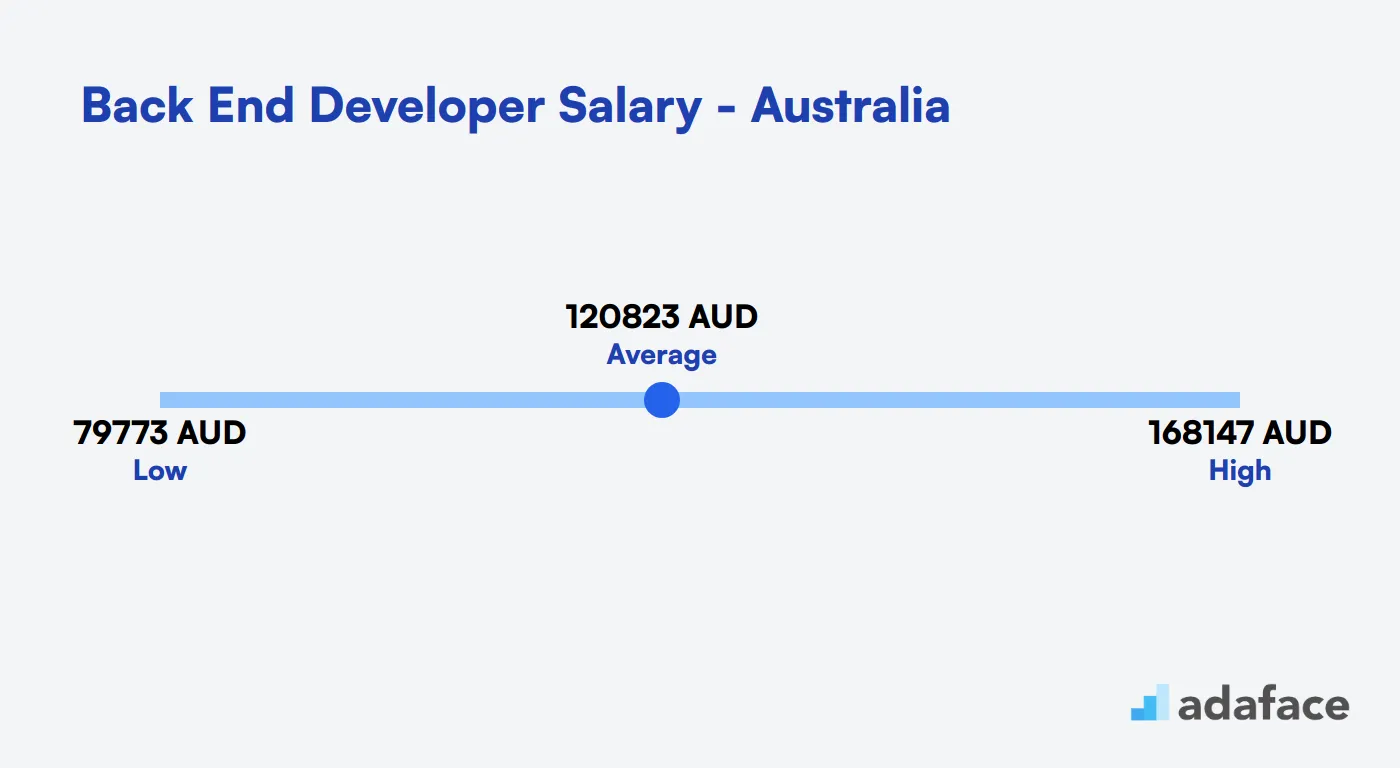
Back End Developer Salary in Canada
Back End Developers in Canada can expect competitive salaries. The average salary range is between CAD 62,000 to CAD 169,000 per year, with a median of about CAD 102,500.
Location plays a big role in salary variations. Victoria, BC offers the highest average at CAD 163,500, while Markham, ON has the lowest at CAD 79,400. Major tech hubs like Toronto and Vancouver fall in the middle range.

What's the difference between a Back End Developer and a DevOps Engineer?
While Back End Developers and DevOps Engineers often work closely together, their roles are distinct but sometimes misunderstood. Back End Developers focus primarily on server-side logic and building APIs, while DevOps Engineers are more about managing infrastructure and automating deployment processes.
A Back End Developer typically works with languages like Java, Python, and Ruby to build server-side features. Their toolkit often includes frameworks such as Node.js, Django, and Spring. Their main responsibilities include crafting database schemas and designing APIs, aiming to improve backend efficiency and performance.
On the other hand, a DevOps Engineer specializes in tools like Docker, Kubernetes, and Jenkins to ensure service reliability and smooth operations. They focus on automating deployment processes, monitoring systems, and maintaining CI/CD pipelines for scalable infrastructure. Their business role is to streamline operations and ensure service reliability.
If you're looking to hire for these roles, it's helpful to map the skills and responsibilities accurately. Our guide on skill mapping can assist you in understanding these differences better.
| Back End Developer | DevOps Engineer | |
|---|---|---|
| College Degree | Computer Science, IT | Computer Science, IT |
| Primary Focus | Server-side logic, APIs | Infrastructure, Deployment |
| Languages | Java, Python, Ruby | Python, Bash, Go |
| Tools | Node.js, Django, Spring | Docker, Kubernetes, Jenkins |
| Responsibilities | Build server-side features | Automate deployment processes |
| System Design | Database schema, APIs | CI/CD pipelines, Scaling |
| Level of Engagement | Development, Testing | Monitoring, Operations |
| Business Role | Improve backend efficiency | Ensure service reliability |
Hire the Right Back End Developers for Your Needs
In this blog post, we've navigated through the important steps to effectively hire a back end developer, from crafting the perfect job description to understanding the required skills and qualifications. Additionally, we've discussed how to screen resumes, conduct technical interviews, and explored various platforms to find potential candidates.
If there's one takeaway from this discussion, it's the importance of using accurate job descriptions and skills tests to ensure you find the right fit for your team. Utilizing targeted assessments like the Back End Engineer Assessment Test can make this process more streamlined and effective.
Backend Engineer Online Test
FAQs
Look for skills in server-side languages like Java, Python, or Node.js, as well as experience with databases and APIs. Problem-solving and logical thinking are also crucial.
Screen resumes by matching the candidate's technical skills with your project needs, checking for relevant experience, and looking for proven problem-solving abilities.
Skills tests can include coding challenges in server-side languages, database management assessments, and REST API tasks. Online platforms like Adaface offer tailored assessments.
Technical interviews should include problem-solving scenarios, coding exercises, and questions on database management. Ensure to evaluate both technical and soft skills.
Top platforms include LinkedIn, GitHub, Stack Overflow, and specialized job boards like Stack Overflow Jobs and AngelList. Consider platforms that cater to tech talent.
A back end developer focuses on server-side application logic and integration, while a DevOps engineer works on automating and streamlining software development processes.
Identify your specific project requirements, assess candidates' technical skills and cultural fit, and use structured interviews and skills assessments for thorough evaluation.

40 min skill tests.
No trick questions.
Accurate shortlisting.
We make it easy for you to find the best candidates in your pipeline with a 40 min skills test.
Try for freeRelated posts
Free resources



